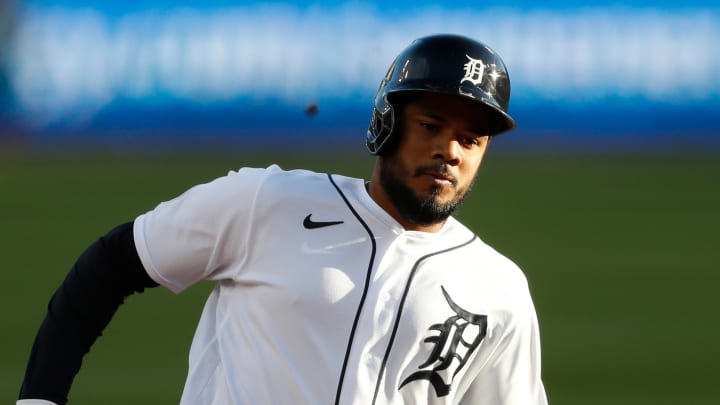Jeimer Candelario: A Season Recap

In a season full of call-ups and new faces, one of the biggest surprises on the 2020 roster came from a veteran - Jeimer Candelario.
Part of the 2017 Alex Avila-Justin Wilson trade return, Candelario immediately made an impact, batting .330 over 27 games with two home runs.
Already described as “major-league ready,” an impressive 2017 season excited many Tiger fans and personnel for his future.
However, a subpar 2018, where he hit just .224 alerted some. 2019 confirmed those alerts as Candelario moved from Detroit to Toledo and vice-versa multiple times, finishing with a measly .203/.306/.337 line.
ICYMI: @jeimer24C drops by to offer his thoughts on the @Tigers 2020 season & hand out a few postseason awards to his teammates this week on The Third Half. pic.twitter.com/kE8oCmM76C
— Bally Sports Detroit (@BallySportsDET) September 28, 2020
2020 had to be the turning point for the 26-year old if he wanted to remain in the organization. But as July began and Jeimer suffered, the risk of being DFA’d continued to grow.
Candelario started the season 0 for 17 with eight strikeouts and just two walks. But then something clicked.
The New York City native smashed a .356/.389/.622 line in August, which rolled right into September.
Candelario continued hitting the ball so well in September, he earned the American League Player of the Week for his work from the 7th to the 13th.
The Tiger demolished the ball that week, amassing three home runs, four walks, four doubles, and nine RBI’s to cap off a week with a tremendous 1.423 OPS.
He even had a little change of scenery, moving from third to first when C.J. Cron went down with an injury, which may have assisted the switch hitter’s astonishing season as well.
So what changed for Candelario once August hit, you may ask? Well, suddenly, the infielder began to kill the fastball.
In 2019, he averaged just .212 against the heater with little to no power. To say the least, whatever adjustment he made for 2020 worked.
Candelario annihilated the pitch, improving his average to .356, and in turn, his on-base percentage also improved immensely.
But not only did he improve against the fastball, he even improved against off-speed pitches. 2019 saw him bat .222 against changeups and splitters, while 2020 saw a .303 average.
That leaves just the breaking balls to analyze.
Facing curveballs and sliders have always been Candelario’s major flaw. He hit just .130 and .162 in 2018 and 2019, respectively, with no power. So as he improved hitting the fastball, you’d expect to see him face more breaking balls than he’d ever seen.
Look who it is on @MLBNetwork AL Player of the Week @jeimer24C joining @AlexaDatt and @StephenNelson. #DetroitRoots pic.twitter.com/d1B10EGWJU
— Ron Colangelo (@ColangeloTigers) September 15, 2020
And that’s exactly what happened. From August to September, the percentage of breaking balls thrown to Jeimer increased from 15.9% to 21.8%. And he remarkably upgraded against those pitches as well. The first baseman went 4 for 14 against breaking balls in September, compared to 4 for 27 in August.
If Candelario continues to stay well-balanced against all pitches, he’ll be a threat in the Tigers lineup for years.
Unfortunately, Candelario’s season did not end on a high note. He went just 1 for 23 in his last seven games with ten strikeouts and concluded the season on the 10-day IL with a back strain.
However, Candelario’s line still ended at a very respectable .297/.369/.503. According to Baseball Savant, Candelario’s hard-hit rate jumped to 47.1 percent, up a considerable amount from the four years prior, where it ranged around 33% every season.
All hope seemed lost after Candelario’s 0 for 17 start to the 2020 season. But minor adjustments made at the plate propelled Jeimer’s career from being a fringe major-leaguer to a potential all-star. Some necessary improvements secured his place on the roster for the 2020 season, and possibly for seasons to come.
Get the latest Detroit Tigers news by joining our community. Click "Follow" at the top right of our Tigers Baseball Report page. Mobile users click the notification bell. Be sure to follow us on Twitter @TigersreportSI
